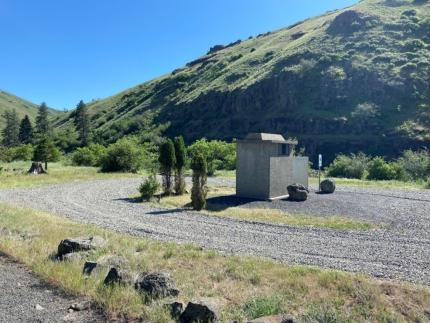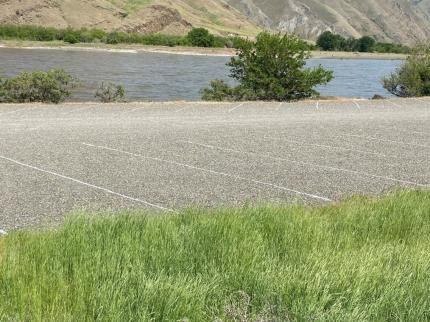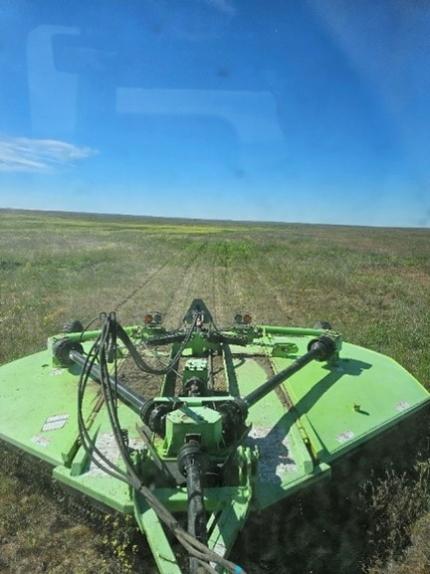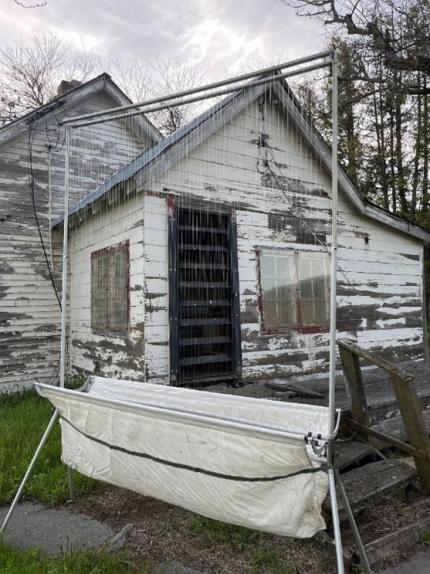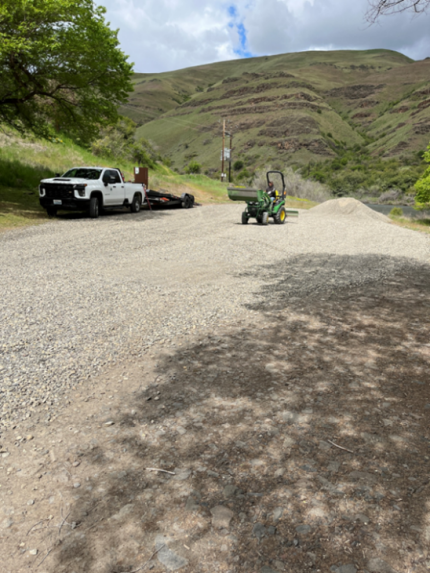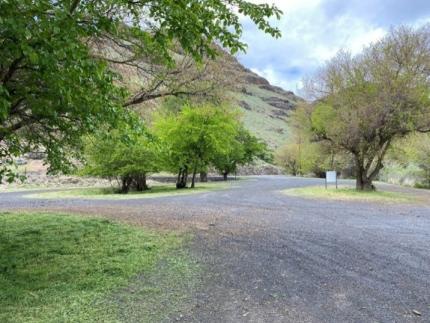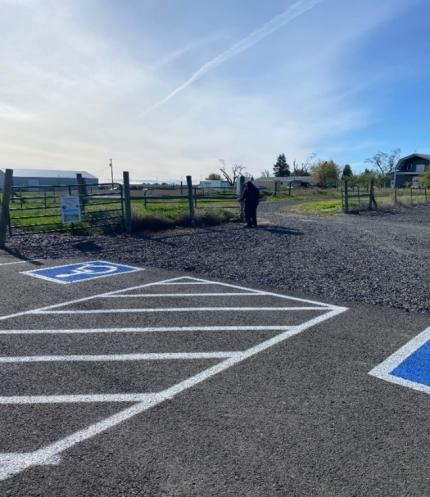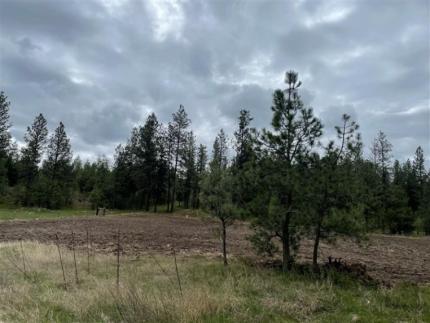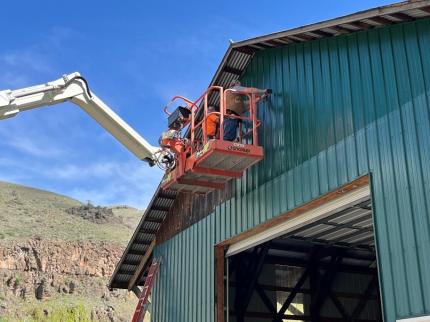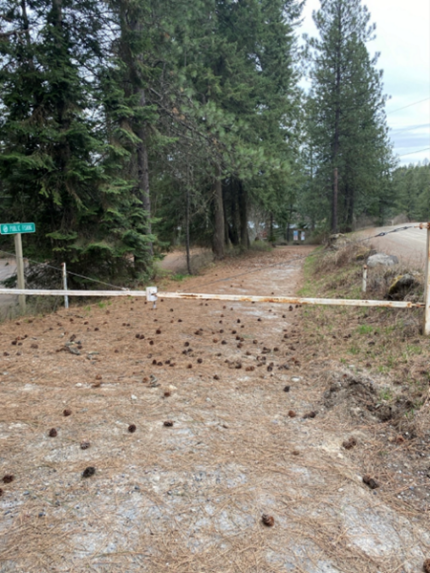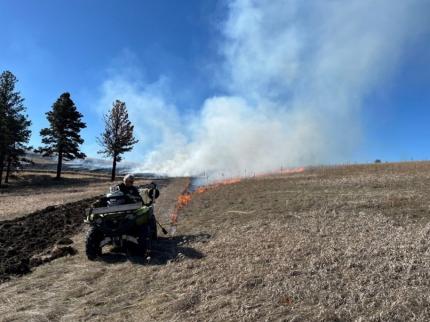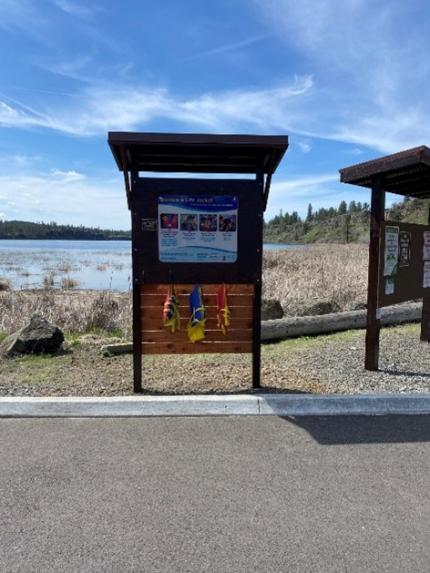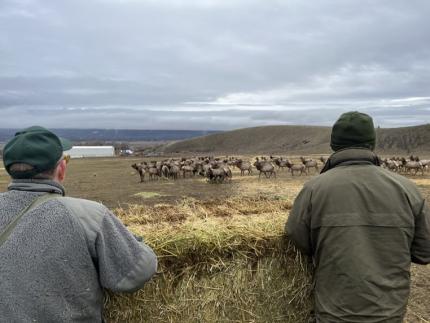Biweekly report Jun1-15 2024 - Region 1 (Eastern)
Managing Wildlife Populations
Maternity Roost Bat Emergence Counts: Biologists Lowe and Brinkman, along with help from Washington Department of Fish and Wildlife staff members DeVivo, Westerman, and Justice and Volunteer Deshazer, conducted evening emergence counts of two bat maternity colonies in Spokane and Lincoln counties this week.
Biologists Lowe and Brinkman, along with help from Washington Department of Fish and Wildlife staff members Lacivita, Harris, and Wagner and Volunteer Deshazer, conducted evening emergence counts of three bat maternity colonies this week.
Chronic Wasting Disease Operations: Natural Resource Technician Moberg collected five Chronic Wasting Disease samples from roadkill deer at Department of Transportation pits, found along the roadway, and from a caller reporting a dead deer near their house.
Tucannon Bighorn Sheep: Wildlife Area Manager Dingman located the bighorn sheep this week. Six lambs have been observed this year, and there is still one ewe who may give birth.
Providing Recreation Opportunities
Rock Lake Poison Hemlock: Access Manager Dziekan and Natural Resource Technician Brant revisited Rock Lake after an herbicide treatment last week. The herbicide took to the plants better than expected. Every plant that was sprayed was curling - won’t be long now before they are completely dead. Dziekan and Brant applied another round of herbicide this week. After the second round which should have about 90% of the plants treated, there are still going to be some that haven’t bolted yet and emerged from the brush, but Dziekan and Brant will continue to apply herbicide as they spot plants. Once the plants are dead, the areas where the public may reasonably interact with the plants will be cleared. Most of the plants are out of those areas, they are just waiting for the herbicide to kill the remainder.
Routine Access Area Service: Natural Resource Technician Brant made a solo trip on the way back from the District 1 team meeting to check a few sites. Brant identified an issue with asphalt at Williams Lake. For some reason, the asphalt next to the toilet is caving in and creating a tripping hazard. This also creates an issue for ADA customers gaining access to the toilet. Brant piled larger stones in the gap, sourced from around the access area. Then he packed in the void with a mix of dirt and gravel that again was sourced from the access area. Brant then tamped it down and created a level surface that eliminated the tripping hazard improved access to the toilet facilities. A more permanent fix will be applied to the issue, but this was a great use of available resources to fix a problem in real-time.
Providing Conflict Prevention and Education
Nuisance Marmots: Wildlife Conflict Specialist Harris coordinated with a wildlife control operator and other Washington Department of Fish and Wildlife District 2 staff members to remove nuisance yellow-bellied marmots from the Region 1 Headquarters office. The marmots were euthanized and saved to be donated as research specimens.
STEAM Presentation: Wildlife Conflict Specialist Harris and Officer Beauchene talked with kids at East Farms Elementary about careers in wildlife biology and wildlife enforcement. Kids also engaged in a hands-on activity to learn about wildlife in Newman Lake.
Injured Owl: Wildlife Conflict Specialist Harris responded to a report of an injured owl sitting in the median on I-90. Harris was able to locate the owl and transport it to a rehabilitation facility in Spokane for treatment. The facility determined that the owl would not be able to recover from its injuries and humanely euthanized it.
“Abandoned” Fawns: Wildlife Conflict Specialist Kolb received a visit at the office by a concerned individual who was out spraying a large agricultural field when they came across a fawn. Assuming the fawn was abandoned because no adult deer were seen in the area, the individual picked the fawn up and put it in a box. Then they continued to spray the field, and the party came across another fawn. They picked that fawn up too. Kolb asked the individual where the box of deer was at and they said back at their shop, and they said they just needed to know where to take them. Kolb instructed the individual to immediately put the fawns back where they had been found.
Conserving Natural Landscapes
Asotin Creek Wildlife Area Dozer Work: Natural Resource Scientist Whittaker finished leveling terraces with a District1 dozer and smoothed it out with 12 foot harrow on Meyers Ridge. After terraces were completed, they took the dozer down into George Creek to clean up trails. Rocks and overgrowth were pushed out of the way for recreational users.
Aquatic Lands Enhancement Account (ALEA) Shrub Plot: Volunteers from the Spokane Audubon and Pheasant Forever put in a 780-shrub plot for wintering habitat for grouse. The plot is located just east of Z-Lake in the Lake Creek Drainage. A 7.5 foot deer fence was constructed around the shrubs to protect them from browsing.
All the shrubs are in excellent condition, but maintenance is required to reduce weed competition. This week Wildlife Area Manager Finch took a backpack sprayer to spray between the rows. There was a lot of lamb’s quarter, hoary cress, and Canada thistle between the rows. There was also a lot of silky milkweed coming so Finch avoided spraying that beneficial plant for monarch butterflies.
Rocky Mountain Elk Foundation (RMEF) Volunteer Work-party Weekend: The annual Rocky Mountain Elk Foundation volunteer work party took place this past weekend with a smaller than average turnout. There was some great work completed! Washington State Fish and Wildlife staff members Dice, Woodall, and Hammons, and University of Idaho Interns Cheili and Alli worked with about 20 volunteers to remove approximately four miles of fence, put out salt blocks, and clean out water troughs.
Conducting Business Operations and Policy
General Facilities and Equipment Maintenance and Repairs: Wildlife Area Assistant Manager Palmer replaced a leaky section of irrigation pipe leading from Sherman Creek, through a diversion box, to the private Sherman Creek Orchard, and Sherman Creek Wildlife Area’s agricultural fields. He found some extra pipe stored at the wildlife area and was able to patch it back in.
Chapman Lake Visit: This week Wildlife Area Manager Finch, Wildlife Area Assistant Manager Wagner, and Region 1 Real Estate Specialist Stallinga met at Chapman Lake to install two different signs. A couple signs stated “No Target Practice” and WAC 220-500-140. The other signs were Washington Department of Fish and Wildlife boundary signs that will identify the property line. Wagner drilled out the lock holes on the gate to install the larger size locks that the Department uses.
General Facilities and Equipment Maintenance and Repairs: Access Area Manager Dziekan and Natural Resource Technician Brant completed All-Terrain Vehicle (ATV) training at the Blue Mountains Wildlife Area. After formal training concluded, trainers and trainees went on a wildlife area trail ride, even spotting a sow bear and her cub from a safe distance.
This training has freed up the pair to use their ATV for weed control, greatly increasing their efficiency in maintaining the grounds at their water access areas. Dziekan and Brant also found that the previous damage to an ATV they had borrowed was worse than expected. Dziekan ordered parts and he and Brant will repair the vehicle. When they are done, the ATV will have new brake pads all around, new rotors on the front, and a new caliper on the front right, all for hundreds of dollars cheaper than a service shop would charge.













